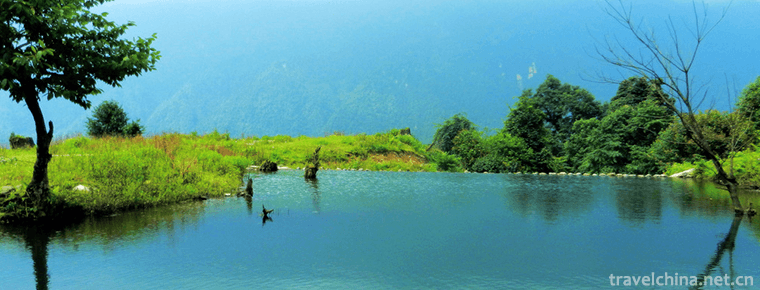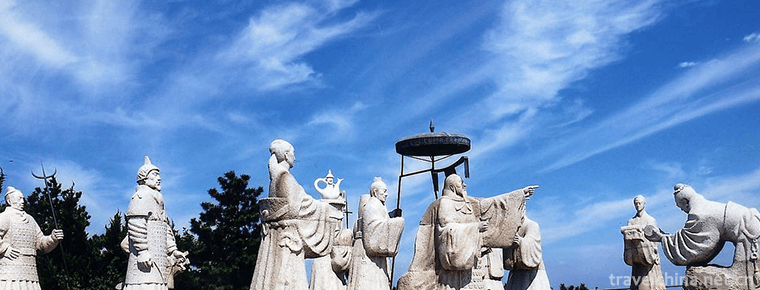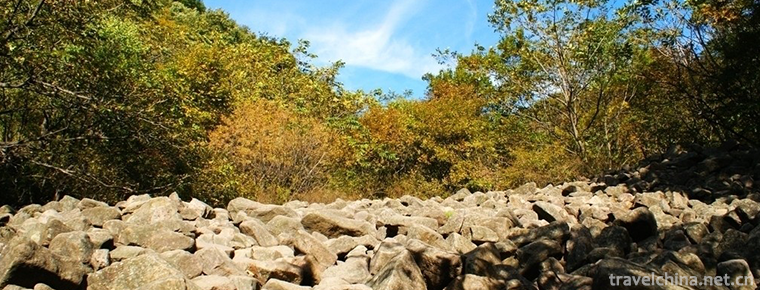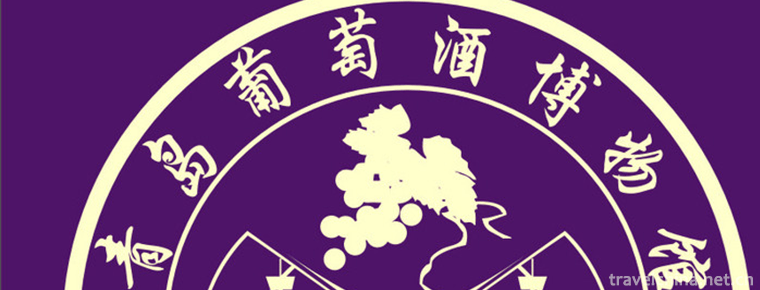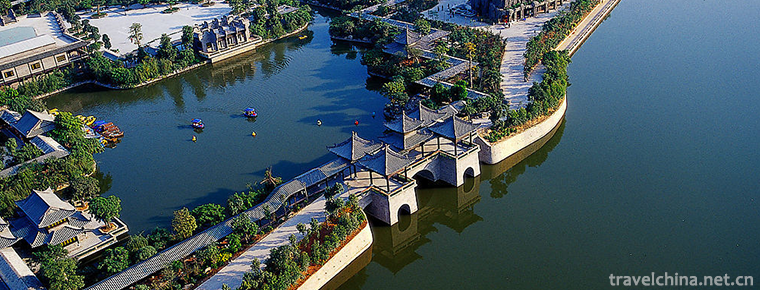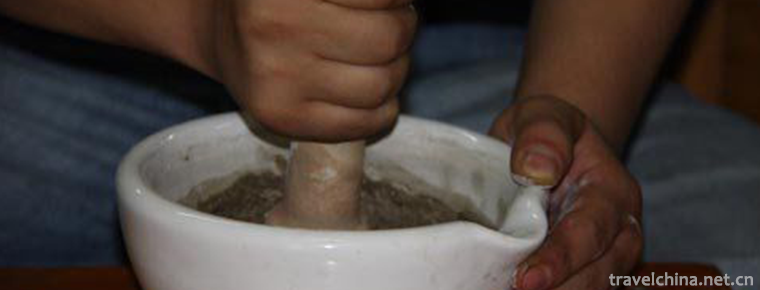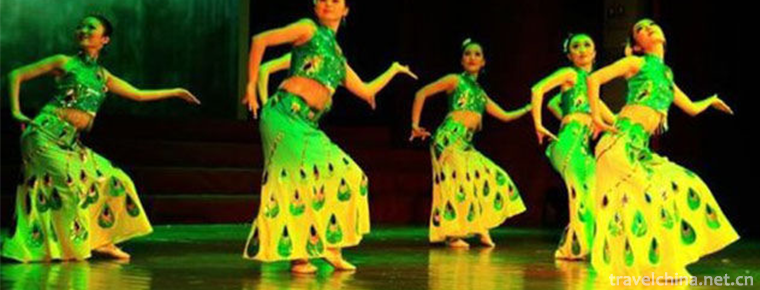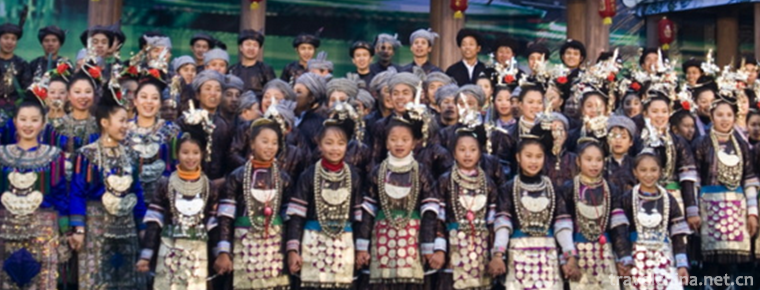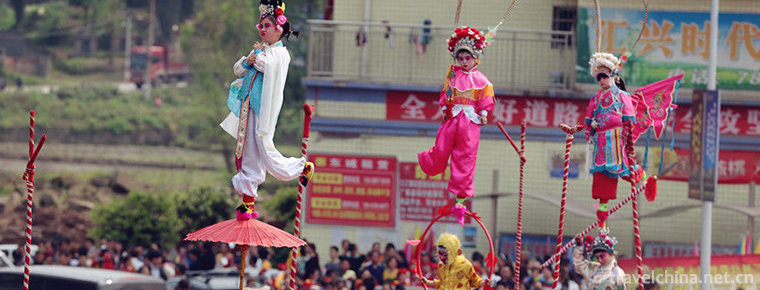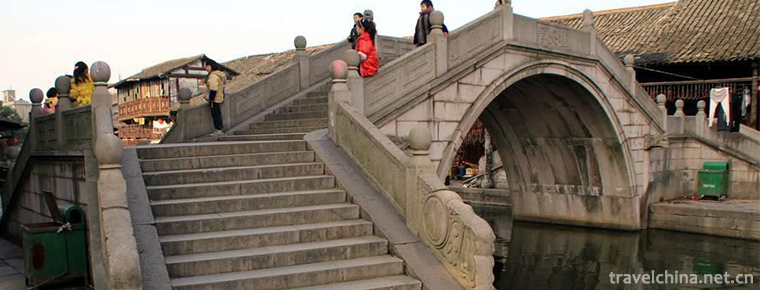Weihai Liugong Island Scenic Area
WeihLiugong Island is located in Weihai Bay, the easternmost part of Shandong Peninsula. It has rich and unique cultural landscape, including the Warring States site dating back thousands of years, the beautiful legend of Liu Gong and Liu Mu in Han Dynasty, the ruins of the Sino-Japanese War such as the Northern Navy Superintendent Office of the Qing Dynasty, the Sailor School, the ancient fort, and many European-style buildings left over from the British Rent Period. "Dongyu Pingfan" and "unsinkable warship" are called. Its northern sea cliff is upright and steep, and its southern part is gentle and continuous. Its forest coverage rate is 87%. It has the reputation of "Haixianshan" and "Xanadu".
Since Liugong Island was opened to the outside world by the closed military restricted area in 1985, great achievements have been made in the protection and utilization of scenic spots and scenic resources. It was named National Forest Park in 1985. In 1999, Liu Gongdao was named "National Civilized Scenic Spot" by the Ministry of Construction. In 2011, it was promoted to national AAAAA level tourist attraction.
The main scenic spots are the Museum of Sino-Japanese War, the Museum of Sino-Japanese War, Liu Gongdao National Forest Park, Liu Gongdao Expo Park, Liu Gongdao Whale Hall, Qidingshan Fortress, Donghong Fortress and Iron Wharf. On the afternoon of June 12, 2018, Xi Jinping took a boat to visit Liu Gongdao teaching area, the Party spirit education base of Jiaodong (Weihai).
Liugong Island is located in the eastern part of Weihai City, Shandong Province, in the center of Weihai Bay Estuary. According to the old records, the name of the Yuan Dynasty is Liu Dao, also known as Liu Jia Dao. It was first named Liu Gongdao in the Ming Dynasty. There is still a legend about the origin of the name of Liu Gongdao.
The origin of the name
Legend has it that hundreds of years ago, there was a merchant ship from somewhere in the south of the Yangtze River. Suddenly, there was a strong wind on the sea. The strong wind swept up huge waves and rushed mercilessly towards the merchant ship. People on board struggled with the wind and waves, hoping to find a place to escape them. However, the ship is sailing in the sea, no land around, no islands, where to find shelter? People were disappointed and prayed for God's blessing. But to no avail, the wind is getting stronger and stronger, the waves are getting bigger and bigger, the ship is bumping in the wind and waves, at one time it is lifted to the crest of the waves, at the other time it is thrown into the valley of the waves... In this way, one day has passed, another day has passed,... Several days and nights passed, and the wind and waves did not stop. The mast of the ship was broken by the wind, the rudder was twisted by the waves, the ship lost control, like a leaf floating on the sea. The freshwater on board was exhausted and the food was gone. The men were exhausted and leaned dejectedly on the deck, leaving the boat to drift with the waves. The sky was getting dark again, and the moon was rising gradually. It was dark in the sky and the sea, with five fingers missing. Only the wind and waves were still whistling in the night.
Suddenly, in despair, somebody exclaimed, "Look, there's a light ahead!" The crowd got up to look for it. Sure enough, there was a tiny flash of fire in front of the darkness, which appeared in the wind and waves. There is fire, there is people, there is hope. All of them were in a tremendous state of mind, forgetting hunger and fatigue, and struggling to paddle the boat toward the fire. Gradually, the fire approached, and it could be seen faintly that there was an island ahead, and the fire was shining on the island. Finally, the boat came ashore. The men got out and went looking for the fire. In a short time, they saw a house in front of them, and the light was shining in front of the window. They rushed forward and knocked at the door. A moment later, the door opened and an old man appeared at the door. As they bowed and talked about their experiences, they asked the old man to give some tea and rice.
Old man readily agreed and called an old woman out to meet everyone. After they entered the house with the old couple, they found that although the room was not spacious, it was very simple and amiable. As he arranged for the rest of the people, the old man ordered him to make a fire and cook. I saw Lao Shan dig out a bowl of rice from the inside room, wash it and pour it into the pot. When people saw it, they murmured in their hearts, "How can you solve the hunger of people with a bowl of rice?" Although they are hungry, they are difficult to speak. After a while, the meal was ready, and the old man greeted everyone to eat. Everyone eats as they like and eats a full meal, but the number of meals in the pot does not decrease. The crowd was secretly surprised, but it was inconvenient to ask. After dinner, the gods thanked him so much that they thanked him and said, "The grace of saving lives will never be forgotten. I don't know why. My father-in-law's family name? Old man laughed and answered, "This is Liu Jiadao, the old man's surname is Liu." Then he took out another bag of food and gave them back to the boat for rest.
The next day, the wind and waves are small, the sun shines high. They went to the island again to fetch water and searched all over the island, but they did not see the house last night or the old man or woman. But the trees on the island are green and the birds are singing and the flowers are fragrant. Only then did they wake up and say, "We are blessed to meet the immortals."
Later, the ship passed here again. They went to the island to look for it again. The island was still full of trees and flowers, but there were still no old man and the house. In order to commemorate the salvation of Liu Gong and Liu Mu, Fangong raised funds to build a temple of Liu Gong on the island, where they sacrificed two clay sculptures of Liu Gong and Liu Mu to express their feelings of commemoration. After the completion of the Liu Gong Temple, the boatmen who came and went there would go to the island to pray. Since then, Liu Gongmiao has become more and more famous, and the island has gradually become known as Liu Gongdao.
The Japanese attacked the Beiyang Fleet
On February 3, 1895, the Japanese fleet lined up in a single column to provoke outside Weihai Port. At 10 a.m., the Japanese fleet sailed to the south mouth of the harbour. First, it fired artillery shells at the Donghong Fortress on Liugong Island. At that time, seven cannons destroyed by the Qing army on the fort of Nangang were repaired by the Japanese army and used by the Japanese army to bombard the fort of Donghong on Liu Gong Island. Along with the Japanese fleet, the coastal Fort formed a pinch attack on Liugong Island. Although the war situation was extremely unfavorable to the Beiyang Navy, Ding Ruchang, the governor of Beiyang, and his generals were not afraid to fight to the death. One day after the artillery battle between the two sides, Japanese warships were unable to approach Weihai Weihai Port and finally had to retreat.
The Japanese army's attack on Liu Gong Island by sea and land did not work, so it decided to attack Liu Gong Island by torpedo. But it is not easy for torpedoes to attack the Beiyang fleet. On Feb. 3, Japanese torpedo boats failed to attack successfully and had to flee in defeat. On February 5, the Japanese vessel attacked again and hit the stern of the Dingyuan Ship. The hull of the ship was seriously damaged. The Dingyuan Ship sailed to the sea stall on the south coast of Liugong Island and grounded. On February 6, the Japanese boat launched a torpedo and hit the distant ship.
More than 30 people were killed on board. At the same time, the training vessel Weiyuan and the difference vessel fixed raft were also sunk by thunder. That afternoon, the Japanese joint fleet launched another sea attack on Liugong Island. After fierce fighting, the Japanese fleet was repulsed again. On February 7, the commander of Japan's joint fleet, Ito Youheng, was determined to attack Liugong Island and wipe out the Beiyang fleet. The Beiyang Fleet's warships counterattacked Liu Gong Island and Japan Island forts. Japan's flagship Matsushima, Bridge, Akihizu and Wave Velocity were all shot and injured. The Japanese United Fleet suffered this damage and its flames were frustrated. At this time, the torpedo barrel of the Beiyang Fleet shook Wang Ping's army and plotted to escape. The fleeing and rebellion incidents caused by Wang Ping's group of national villains not only weakened the strength of the Beiyang fleet, but also affected the morale of the Qing army. They caused extremely serious consequences and committed unforgivable crimes in the fighting on Liu Gong Island.
Liu Buchan commits suicide in grief and indignation
The situation on Liu Gong Island has worsened because of the long-awaited reinforcements. In order not to let the injured warship fall into the hands of the Japanese, Ding Ruchang had no choice but to sink the Dingyuan warship on February 9, and loaded cotton powder on the central main part of the ship and destroyed it. On February 10, Liu Buchan, the right-wing commander and warship manager of Dingyuan, committed suicide in extreme indignation at the age of 44.
The whole army of Beiyang Marine Division was overthrown
At 8:30 a.m. on February 17, Japan's combined fleet headed by Matsushima Ship, followed by the rest of the fleets, set sail from Bai Chi Cliff in a single longitudinal formation, with flags flying high, fishing through Beikou, and sailing slowly into Weihai Port. At 10:30 a.m., all the 10 Beiyang Navy vessels lowered the Chinese flag, while the Japanese flag was replaced by the Liu Gongdao artillery platform. The Japanese flag. The Qing Dynasty's Beiyang Fleet, once a powerful force in the Far East, was thus destroyed.
Xiao Jinguang Fishing Vessel Inspection
In March 1950, when the People's Navy was less than one year old, Xiao Jinguang, the new commander of the Navy, came to Weihai, Shandong Province. In order to cross the sea to Liugong Island for fortification inspection, the accompanying personnel rented a boat to the local fishermen. On the way, the fisherman saw that all the people accompanying him called him "commander", and asked curiously which commander it was. When they learned that this was the commander of the New China Navy, the fishermen were puzzled and said, "The commander of the Navy wants to rent my fishing boat?" Xiao Jinguang, however, spoke in a heavy voice and said to the accompanying officers, "Note that on March 17, 1950, Navy Commander Xiao Jinguang inspected Liu Gong Island on a fishing boat!" For this reason, Xiao Jinguang was greatly stimulated. At that time, he secretly made up his mind to show the world what he looked like.
traffic
1, tourist boat
There are 22 tourist boats in charge of Weihai-Liugong Island ferry mission, all of them are steel shell or FRP structure, with passengers ranging from 100 to 200. The average one-way voyage time is 15 minutes. The voyage was awarded the title of "civilized route" by the Ministry of Communications in 2001. In addition, a sea tour route around Liugong Island has been opened, with a tour boat around Liugong Island for about 40 minutes a week.
2. Ropeway Station
From Liugongdao Ding Highway to Qidingshan Fortress, you can take the tourist ropeway. The ropeway is designed with single-line circular fixed rope holder and two-person hanging basket. The line is 708 meters in length, running at 60 meters per minute and carrying 300 people per hour. There are 9 brackets and 60 hanging baskets. The highest point of the line is 22 meters. The control platform adopts advanced hydraulic technology to ensure the safety and comfort of the ropeway. Liugong Island National Forest Park is free of charge.
3, sightseeing bus
In the main road of scenic spot, Ding Road and Deng Road, you can take the open tour bus. Along the way, there are: tourist wharf, sailor square, cultural square, Liugongdao Expo Park, ropeway station, Liugongdao Dongcun, National Forest Park, Ding Ruchang Memorial Hall, sailor school, Huangdao Armament Hall, Military Exhibition Hall, Tiequan, etc. China Sino-Japanese War Museum.
Bus Station (Railway Station) Liugong Island Passenger Transport Center
Bus: Take bus K1, K2, K3, 1, 12, 52, 53, 101 and so on, get off at Beizhudao Station and travel eastward for one kilometer.
Weigao Square (Hualian) Station in the city gets off at Liugong Island Tourist Terminal by No. 32 bus.
Weigao Square (Hualian) Station in the urban area takes No. 10 bus and gets off at Weihai No. 2 Middle and North Campus and travels 600 meters eastward.
Guide
Liu Gong Island Tourist Center
Located in the northeast corner of the dock waiting hall in Liugong Island, it covers an area of about 100 square meters and has complete facilities. It can provide tourists with tour guides, rest, inquiries and medical services. At present, the center is equipped with more than 30 professional tour guides, with good personal quality and comprehensive ability. It can provide comprehensive, accurate, thoughtful and warm tour guide service for individual visitors and groups. It is equipped with a doctor on duty and some commonly used first aid drugs.
Restaurant
1, Liu Gong Island Hotel
Located about 1000 meters east of the pier in Liugong Island, it has a superior location and convenient transportation. It can be reached in 5 minutes by island sightseeing bus. The hotel is facing the sea to the south, backed by the green hills, and adjacent to the main attractions of the island on the west, the Expo Garden and Cableway Station of Liugong Island, with an elegant environment. The hotel has 19 standard rooms, luxury standard rooms, economy rooms and suites, with complete facilities and facilities. Equipped with closed-circuit television, high-speed broadband Internet access. The restaurant is equipped with authentic Shandong cuisine chefs to manage, frugality by people, so that you are outside but add to the feeling of home, is your ideal small residence. Liugong Island Hotel will make you feel friendly, convenient, comfortable, safe, hygienic and considerate.
2, Liu Gong island people
Located in the middle of Ding Highway, the main tourist road of Liugong Island, the transportation is convenient. The main dishes of the hotel are fresh and vigorous seafood, which can provide various seafood delicacies with Jiaodong characteristics. The hotel is decorated in a semi-open environment with unique features. While tasting seafood, visitors can also enjoy the beautiful seaside scenery. Since its opening, the hotel's delicious food and beautiful environment have always won the praise of tourists.
The delicacies of Liu Gongdao are famous for cooking seafood, especially the production of seafood and small seafood. Cuisine is particularly particular about knife work, pattern, fire and taste. It is good at freshness, crispness and tenderness, and the original taste of soup. The main flavor dishes are braised sea cucumber, braised shrimp, dried shellfish, braised conch, fried Swan eggs, ginger crab, steamed jiyu, fried longevity vegetable and Weihai Qingtang.
Shopping
Liu Gong Street
Located on the north side of Liugongdao Sailor Square, it is a semi-underground shopping street with a length of 190 meters. Its main commodities include Korean clothing, Korean handicraft, Korean food, Weihai characteristic seafood and fishing gear.
entertainment
Liugongdao Cultural Square is located in the east of Liugongdao Sailor Square. It is equipped with stage, benches for tourists to rest, music fountains and other facilities. During the peak season of tourism, Liugongdao Art Troupe will perform songs and dances for tourists against the backdrop of music fountains.
Ticket Price
1. Liugong Island scenic spot ticket price is set at 130 yuan per person, ropeway 60 yuan per person (round trip), Island Tour 60 yuan per person, 20 yuan per person by sightseeing bus; Liugong Island Forest Park and other natural landscapes and historical sites are no longer charged.
2. The Sino-Japanese War Museum is open free of charge.
3. The price of entry ticket of Liugong Island scenic spot and the price of admission ticket of Liugong Island Expo Park are integrated to 138 yuan per person.
4. Other Preferential Policies
(1) Children under 1.2 meters in height are exempted from all tickets;
(2) Disabled soldiers are exempt from scenic spot tickets, with a half price of 15 yuan per person;
(3) Children with height of 1.2-1.4 metres are offered half-price tickets to islands and scenic spots, 85 yuan per person;
(4) Senior citizens over 60 years old and disabled persons are exempted from tickets to scenic spots, 31 yuan per person;
(5) Active servicemen, the city's minimum living allowance recipients, minors over 1.4 (including 18 years old), full-time undergraduate students and students with lower education, scenic spot tickets are half-price, 85 yuan per person .
Liu Gongdao Ferry Cruise Time:
Ships entering and leaving islands in peak season: 7:00-16:30: 10:00-17:30;
Off-season Ships: 7:30-15:00 Out-of-Island Ships: 10:00-15:30 (Specific time will change due to weather reasons)
Liu Gongdao Expo Park: Including Tickets
China Sino-Japanese War Museum: Including Tickets
China Sino-Japanese War Museum Exhibition Hall: Including Tickets
Liu Gong Island National Forest Park: Including Tickets
Forest Park Cableway (Roundtrip): 60 yuan
Tour bus: 20 yuan.
Offshore tour around the island: 60 yuan
Season
Liugong Island has fresh air, warm winter and cool summer, pleasant climate, small temperature difference between day and night, long frost-free period, and annual average temperature of about 12 degrees C. It is an ideal place for summer, vacation and recuperation.
activity
On August 15, 1945, Japan declared its unconditional surrender, and China won an all-round victory in the War of Resistance Against Japan. In order to remember the revolutionary martyrs, educate the people not to forget the national shame, and stimulate the national integrity and sense of mission, the Liugong Island Border Police Station organized the event. In the event, the women police formed a patriotism preaching team to overcome the hot summer, issued small flags to past tourists and explained history. Past tourists stopped in succession. Officers and soldiers of Navy and fire fighting forces stationed on the island were also infected by this atmosphere and enthusiastically joined in the activity. Everyone wrote "Memory martyrs, remember history, remember national shame, and so on." The banner of "Revitalizing China" was signed. Officers and soldiers waved the national flag with tourists, sang the national anthem and expressed patriotism. After the signature, the patriotic propaganda team grouped tourists and naval officers and soldiers to explain the history of the Sino-Japanese naval war and popularize patriotic education knowledge.










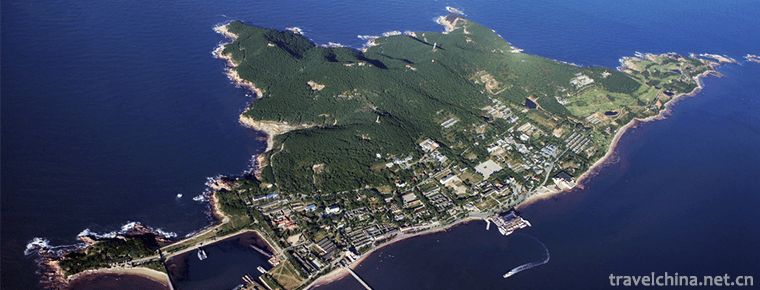
-
Taihang Grand Canyon
Linzhou Taihang Grand Canyon, located in the northwest of Henan Province and Linzhou City in the eastern foot of the southern Taihang Mountains.
Views: 255 Time 2018-12-09 -
Heizhugou Scenic Area
Heizhugou National Forest Park, located in Heizhugou Town, Ebian Yi Autonomous County, Leshan City, Sichuan Province, spans Haqu Township, Lewu Township and Jinyan Township..
Views: 219 Time 2019-01-13 -
Langyatai Scenic Area
Langyatai Scenic Spot belongs to Qingdao Langyatai Provincial Tourism Resort (established in December 1995 with the approval of Shandong Provincial People's Government with a planned area of 9.8 squar.
Views: 181 Time 2019-01-29 -
Limutai Natural Scenic Area
Limutai Natural Scenic Spot is located at the northernmost end of Tianjin, known as "Tianjin Arctic". In the scenic area, the peak forest and canyon are strong and dangerous.
Views: 171 Time 2019-01-29 -
Qingdao Wine Museum
Qingdao Wine Museum is located at No. 68 Yan'an Road, North District of Qingdao City. It is an underground museum with popular science education, collection and display.
Views: 183 Time 2019-02-07 -
Yuehui Garden Scenic Spot
Yuehui Garden is a large private garden located in Dongguan, Guangdong Province. It is the representative of Lingnan Garden. There are 108 garden attractions such as buildings.
Views: 131 Time 2019-03-09 -
Production Techniques of Tibetan Mineral Plant Pigments
Since the emergence of human beings, mineral pigments have been accompanied by human beings. Mineral pigments were first used to draw murals.
Views: 204 Time 2019-04-09 -
Peacock Dance of Dai Nationality
Dai peacock dance is the most famous traditional performing dance in Dai folk dance in China. It is spread in Ruili, Luxi, Xishuangbanna, Mengding, Mengda, Jinggu, Cangyuan.
Views: 207 Time 2019-04-24 -
the Dong chorus
Originated in the Spring and Autumn Period and the Warring States Period, the Dong Grand Song has a history of more than 2500 years. It is a folk chorus form with multi-voice.
Views: 165 Time 2019-04-27 -
Sanhui Pavilion Club
Sanhui Caiting Pavilion is a local traditional folk cultural activity that performs in streets or squares on March 16-18 of the lunar calendar every year. Its artistic form of performance is ingenious.
Views: 113 Time 2019-06-12 -
Construction Techniques of Stone Bridge
Shaoxing's ancient bridge construction techniques can be traced back to the Spring and Autumn Period and the Warring States Period. To the Han Dynasty, the stone arch bridge construction techniques be.
Views: 216 Time 2019-06-15 -
China University of Labor Relations
China Institute of Industrial Relations (China University of Labor Relations) All China Federation of trade unions Ordinary Institutions of higher learning It is jointly built by the all China Federat.
Views: 153 Time 2019-12-20

